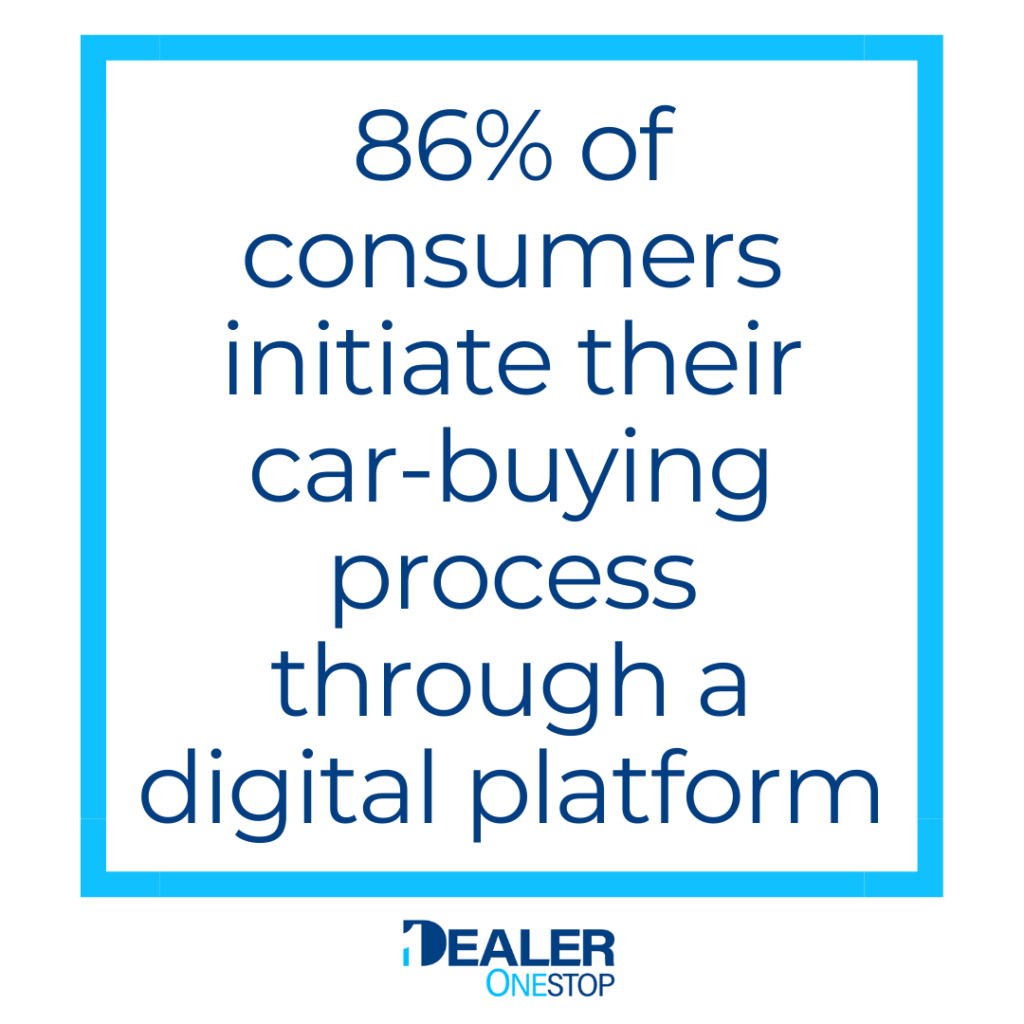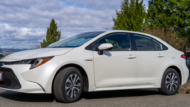In the ever-evolving auto industry landscape, digital advancements are swiftly overtaking traditional pathways to car buying. The emergence of the digital shopper marks a paradigm shift, highlighting a preference for online exploration and comparison before setting foot in a showroom. A revealing report by Cox Automotive indicates a staggering shift, with nearly 65% of car shoppers dedicating the majority of their decision-making process to online research. This shift underscores the growing importance of a robust digital presence for auto dealerships and signals a transformation in consumer behavior, emphasizing the need for dealerships to recalibrate their strategies to meet these new digital-first preferences.
As the digital domain becomes increasingly integral to the car-buying journey, auto dealerships must significantly enhance their digital footprint. The once-dominant allure of physical showrooms and persuasive sales teams now supports a dealership’s online identity. Engaging websites and vibrant social media interactions have become essential in capturing the attention of this new breed of tech-savvy consumers. The pivot towards strengthening a dealership’s digital presence is not merely about increasing visibility; it’s about forging a bridge of trust with potential buyers, transforming digital interactions into concrete sales opportunities. This comprehensive approach, spanning from user-friendly websites to strategic social media engagement, sets the stage for a deeper exploration of strategies like SEO, which cater to the nuances of digital visibility and customer engagement in the auto industry.
The Digital Shopper: A New Breed of Buyer
 The car buying landscape has undergone a significant metamorphosis, shifting from a process primarily rooted in physical interactions to one that’s predominantly online. Recent findings indicate that a majority of consumers, around 86%, now initiate their car buying journey on digital platforms, conducting thorough research and comparisons long before they consider stepping into a dealership. This shift signals the rise of a new kind of buyer who places a premium on the wealth of online information.
The car buying landscape has undergone a significant metamorphosis, shifting from a process primarily rooted in physical interactions to one that’s predominantly online. Recent findings indicate that a majority of consumers, around 86%, now initiate their car buying journey on digital platforms, conducting thorough research and comparisons long before they consider stepping into a dealership. This shift signals the rise of a new kind of buyer who places a premium on the wealth of online information.
This transformation in consumer behavior has made it imperative for auto dealerships to rethink and expand their digital engagement strategies. While still valuable, the allure of physical showrooms and the impact of face-to-face sales pitches no longer wield the same influence over consumers’ buying decisions as they once did. For dealerships, creating a strong digital presence is now essential to capture the attention of today’s digitally savvy consumers. This involves more than just visibility; it’s about establishing a credible and engaging online identity through well-designed websites and active social media platforms.
Moreover, with most consumers turning to online research as their first step in the car buying process, it’s become critical for dealerships to enhance their digital strategies. A compelling online presence isn’t just a nice-to-have; it’s a key player in building trust with potential buyers and effectively bridging the gap between online exploration and physical purchases. Through a holistic digital strategy that embraces interactive websites, engaging social media content, and personalized online experiences, dealerships can better meet the expectations of modern consumers and guide them from initial online interest to the final sale.
Optimizing Dealership Websites for the Modern Consumer
To thrive in the competitive digital marketplace, auto dealerships must ensure their website serves as more than just a digital business card. It should be an immersive virtual showroom that captivates and retains visitor interest from the first click. An engaging website design showcases the dealership’s brand and smoothens the customer’s online journey. By incorporating high-quality visuals, easy navigation, and clear calls to action, dealerships can significantly improve user experience and facilitate interactions with their inventory, services, and financing options.
Emphasizing mobile design has become indispensable as most users now access the internet via smartphones and tablets. Adopting a mobile-first approach ensures that the website offers an optimal browsing experience on small screens, with responsive design elements that adjust seamlessly across devices. This consideration is crucial for meeting modern consumers’ expectations and improving key website metrics, like time on site and bounce rate, which are integral to retaining potential buyers’ attention.
Integrating mobile usability into website design is pivotal in enhancing a site’s SEO. Search engines prefer websites that are optimized for mobile, viewing them as more user-friendly and thus deserving of higher rankings in search results. This aligns website design directly with SEO efforts, underscoring the need for a comprehensive digital marketing strategy. By focusing on the synergy between mobile-optimized design and SEO, dealerships can effectively increase their online visibility, attracting more potential buyers to their virtual showrooms.
SEO: The Highway to Visibility
In the digital ecosystem, visibility is everything, and Search Engine Optimization (SEO) is the beacon that guides potential customers to your dealership’s online presence. Dealerships can significantly boost their visibility by integrating relevant keywords, crafting engaging meta descriptions, and generating high-quality content. This strategy places your business on the virtual map, making it easier for shoppers to find you during their online searches. Think of SEO as the digital counterpart to the most well-positioned physical billboard.
Understanding the power of local search is essential for an effective SEO strategy. Since 46% of all Google searches seek local information, optimizing your dealership for local SEO can place your business at the top of search results in your area. This strategy extends beyond mere website adjustments. It includes managing your Google My Business listing and gathering positive reviews, both of which significantly enhance local search rankings.
Adding to the complexity, the mobile-friendly nature of your website also impacts its search engine standing. Given that over half of global web traffic comes from mobile devices, a site that’s not optimized for mobile is likely to be penalized in search rankings, pushing it further down the results page. In essence, ensuring your website is responsive and loads quickly on all devices is not just about user experience but is also crucial for SEO success.
By embracing these SEO best practices, auto dealerships can drive more traffic to their sites, engage potential buyers effectively, and ultimately, pave the way for increased sales. Remember, in the fast-moving digital world, staying ahead in SEO can make all the difference between being seen and getting lost in the crowd.
Social Media: Creating Connections
Social media platforms are vibrant marketplaces where auto dealerships can forge strong connections with potential buyers. By employing strategic, engaging content and a dash of humor, dealerships have the opportunity to highlight their brand’s personality, share glowing customer testimonials, and run targeted advertisements. The aim is to craft content that resonates with the audience, builds trust, and nudges interest toward your dealership.
Maximizing Engagement with Short-Form Video
The magnetic pull of short-form videos on platforms such as Instagram and Facebook presents an unparalleled opportunity for auto dealerships aiming to captivate a wider audience. This trend caters perfectly to the decreasing attention spans of online users, offering quick yet compelling glimpses into what dealerships have to offer. By focusing on content showcasing the latest vehicle features, exclusive promotions, or even day-to-day dealership operations, businesses can create a narrative that entertains and educates prospective customers, steering them toward their website for more detailed information.
The innate virality of short-form videos can significantly amplify a dealership’s online presence. Creative reels that spark emotion, whether through humor, awe, or inspiration, are more likely to be shared across social networks, expanding reach far beyond the dealership’s immediate followers. Coupling these videos with strategic hashtags can also improve visibility, making it easier for car buyers to discover your content amid the vast digital landscape. Hence, by harnessing the power of short-form video, dealerships can effectively engage with their audience, driving both online traffic and in-store visits.
Leveraging Facebook for Community and Visibility
Thanks to its extensive user base and targeted ad capabilities, Facebook serves as a critical platform for engaging potential car buyers. Dealerships can fine-tune their advertising efforts to reach specific audiences based on demographics, interests, and geographic locations. An effective strategy involves using Facebook Groups to grow visibility organically by joining or creating groups related to local communities or automotive interests. Additionally, listing vehicles on Facebook’s marketplace can attract buyers actively searching for their next car. Engaging consistently on your posts and quickly responding to queries can help cultivate a dedicated community, turning followers into loyal customers.
Additionally, tapping into user-generated content (UGC) can boost trust and engagement on social media platforms. When customers share their positive experiences or showcase their new purchases from your dealership, reposting this content validates their purchase decision and motivates others to consider your dealership for their automotive needs. Pairing this strategy with targeted advertising can further solidify your dealership’s presence in the minds of potential buyers, ensuring you remain their top choice when they decide to purchase.
Optimizing Sales with Facebook Ads
Facebook Ads emerge as a powerhouse tool for auto dealerships aiming to boost sales and increase brand awareness. With over 2.8 billion monthly active users on Facebook, the potential reach for dealership ads is vast. This platform allows for highly targeted advertising, enabling dealerships to narrow down their audience based on specific demographics, interests, and behaviors. A remarkable statistic from Facebook reveals that ad recall from sponsored posts increases by an average of 50%, demonstrating the impact well-crafted ads can have on potential customers.
The versatility of Facebook Ads is unmatched. Dealerships can choose from various ad formats, including carousel ads that showcase multiple vehicles, collection ads that provide a seamless browsing experience, or video ads that engage users with dynamic content. By carefully crafting messages that resonate with their target audience, dealerships can drive meaningful engagement and, ultimately, guide potential buyers along the path to purchase. The key lies in continuously optimizing ad campaigns based on performance metrics to ensure the best return on investment.
Social media platforms and Facebook Ads offer auto dealerships dynamic tools to engage potential buyers effectively. Strategic content, humor, and short-form videos on sites like Instagram and Facebook help showcase dealership personality, vehicle features, and promotions, enhancing buyer interest and brand visibility. Meanwhile, targeted Facebook advertising capitalizes on the platform’s vast user base, allowing personalized, impactful outreach to specific demographics. By leveraging these digital strategies, including user-generated content and active community engagement, dealerships can amplify their online presence, build trust with audiences, and drive both online traffic and in-store visits, ensuring they remain the top choice for automotive needs.
Email Marketing: The Personal Touch
Email marketing remains an incredibly effective tool for auto dealerships, combining the power of personalization with the efficiency of digital outreach. While some might declare email to be a thing of the past, its capacity to deliver tailored messages directly to potential buyers’ inboxes cannot be understated. Notably, emails with personalized subject lines are 26% more likely to be opened, demonstrating the value of customization in capturing recipient interest.
A successful email marketing strategy involves more than just sending out mass newsletters; it requires segmentation. By dividing your email list into specific groups based on customer interests, purchase history, or behavior patterns, dealerships can send highly relevant content that resonates with each segment. This approach not only increases engagement but also enhances the likelihood of conversion.
Additionally, incorporating a clear call-to-action (CTA) in every email is crucial. Whether it’s inviting readers to book a test drive, view the latest models on your website, or take advantage of a limited-time offer, a strong CTA guides recipients toward the next step. Furthermore, automating follow-up emails based on recipient actions can keep potential buyers engaged throughout their decision-making process, gently nudging them closer to a purchase.
Email marketing offers auto dealerships a dynamic platform to connect with their audience on a personal level. By focusing on personalization, segmentation, and clear CTAs, dealerships can enhance their engagement rates and drive meaningful actions. Continuously analyzing the performance of your email campaigns and adjusting strategies accordingly ensures that your dealership remains top of mind for potential buyers.
Embracing Digital Strategy in Auto Sales
As the auto industry landscape undergoes radical changes, driven by digital advancements and shifting consumer behaviors, auto dealerships face the crucial task of recalibrating their strategies to align with these new realities. The digital-first approach of modern car buyers, heavily reliant on online research and comparisons, underscores the diminishing role of traditional sales tactics and the rising importance of a solid digital presence. To remain competitive and relevant in this transformed marketplace, dealerships must evolve, leveraging robust websites, strategic social media engagement, and effective SEO practices. These digital tools enhance visibility and foster trust and reliability among potential buyers, setting the stage for successful conversions from online interactions to in-store sales.
The pivot towards digital necessitates a holistic approach encompassing mobile optimization, engaging content creation, and personalized email marketing strategies. By embracing these comprehensive digital marketing efforts, auto dealerships can effectively navigate the challenges posed by the evolving preferences of the digital shopper. Cultivating a solid online presence and actively engaging with consumers through various digital platforms are no longer optional strategies but essential components of a modern dealership’s toolkit. In doing so, dealerships meet the expectations of today’s tech-savvy consumers and secure their place in the future of auto retailing, where digital connections pave the way to real-world sales.








